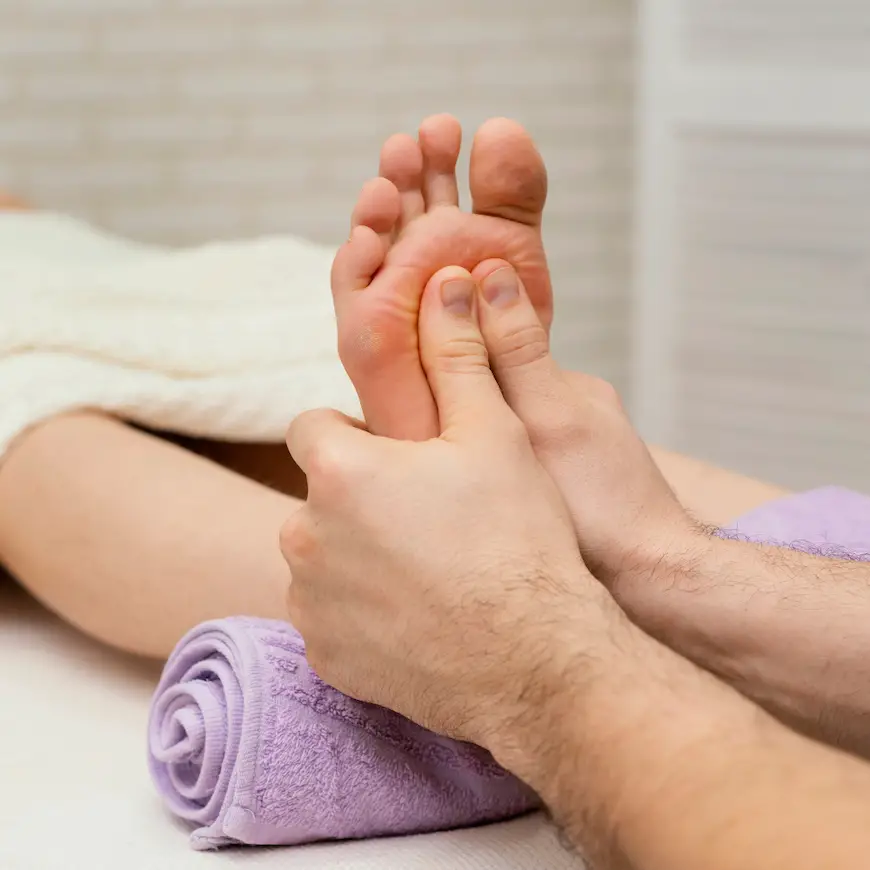Ozempic (semaglutide) has become one of the most talked-about medications for managing type 2 diabetes and weight loss. However, while it’s effective at lowering blood sugar and promoting weight loss, many users report mild to severe side effects.
If you’re considering Ozempic or already taking it, understanding the potential side effects, who should avoid it, and how to manage symptoms is crucial. Let’s explore everything you need to know about Ozempic side effects.
What is Ozempic?
Ozempic is a GLP-1 receptor agonist, which means it mimics a natural hormone called glucagon-like peptide-1 (GLP-1). This hormone helps regulate blood sugar levels, slows down digestion, and reduces appetite.
Why is Ozempic so Popular?
- It lowers A1C levels, helping people with type 2 diabetes manage their condition.
- It curbs hunger, leading to significant weight loss for many users.
- Some celebrities and influencers have promoted its use for weight loss, even though it was originally designed for diabetes.
While Ozempic has life-changing benefits, it also comes with potential ozempic side effects that range from mild to severe.
Common Ozempic Side Effects
Most people experience mild ozempic side effects, especially in the first few weeks of using Ozempic. These usually improve over time as your body adjusts.
1. Nausea and Vomiting
Many users experience nausea when they first start taking Ozempic. This happens because the medication slows digestion, making food stay in your stomach longer.
✅ How to Manage:
- Eat small, frequent meals instead of large ones.
- Avoid greasy, spicy, or sugary foods that can trigger nausea.
- Drink ginger tea or take peppermint oil capsules for natural relief.
2. Diarrhea or Constipation
Ozempic affects how quickly your stomach empties, which can lead to digestive issues like diarrhea or constipation.
✅ How to Manage:
- Drink plenty of water to prevent dehydration.
- Eat fiber-rich foods (vegetables, whole grains) to promote healthy digestion.
- Consider an electrolyte drink to fill up any lost fluids.
3. Stomach Pain and Bloating
Some people experience abdominal discomfort, bloating, or cramping while on Ozempic. This is due to the slower digestion process.
✅ How to Manage:
- Try probiotics to support gut health.
- Use a heating pad on your stomach for relief.
- Avoid carbonated drinks, which can increase bloating.
4. Loss of Appetite
Ozempic works partly by reducing your appetite, which is why many users lose weight.
✅ How to Manage:
- Ensure you’re still eating nutrient-dense foods to avoid deficiencies.
- Protein shakes can help if you’re struggling to eat enough.
5. Fatigue and Low Energy
Feeling tired while on Ozempic is common, especially as your body adjusts to lower blood sugar levels.
✅ How to Manage:
- Make sure you’re eating enough protein and complex carbs.
- Stay active—light exercise can boost energy levels.
- Take a daily multivitamin to prevent deficiencies.
Serious Ozempic Side Effects (When to Call a Doctor)
While rare, some serious side effects require immediate medical attention.
1. Pancreatitis (Inflamed Pancreas)
⚠️ Symptoms include:
- Severe stomach pain that radiates to your back
- Persistent nausea and vomiting
- Fever
What to Do: Stop taking Ozempic and call your doctor right away.
2. Kidney Problems
Ozempic can sometimes cause dehydration, which can strain your kidneys.
⚠️ Symptoms include:
- Swelling in the legs or feet
- Dark urine or reduced urination
- Extreme fatigue
What to Do: Increase water intake and speak with a doctor if symptoms persist.
Read also: 6 Kidney Problems Signs: Signs That Your Kidneys Aren’t Working Properly
3. Gallbladder Issues (Gallstones)
Some users experience gallstones or gallbladder inflammation while on Ozempic.
⚠️ Symptoms include:
- Sharp pain in the upper right abdomen
- Yellowing of the skin (jaundice)
- Nausea after eating fatty foods
What to Do: If you notice these symptoms, consult your doctor immediately.
Read also: Gallstones and How to Treat Them?
Who Should Avoid Ozempic?
Some people should not take Ozempic due to potential risks.
🚫 Avoid Ozempic if you have:
- A personal or family history of thyroid cancer
- Multiple endocrine neoplasia syndrome type 2 (MEN 2)
- Pregnancy or breastfeeding (not enough safety data)
- Severe digestive issues (like gastroparesis)
Best Ways to Manage Ozempic Side Effects
Here are some practical tips to reduce Ozempic side effects:
✅ Hydrate: Drink at least 8 cups of water daily to prevent dehydration.
✅ Eat Balanced Meals: Focus on protein, healthy fats, and fiber to support digestion.
✅ Start with a Low Dose: This helps your body adjust gradually.
✅ Listen to Your Body: If side effects persist or worsen, consult your doctor.
Recommended Amazon Products for Managing Side Effects
1. Electrolyte Powder Packets
💡 Why It’s Recommended: Ozempic can cause nausea, vomiting, or diarrhea, leading to dehydration and electrolyte imbalance. This electrolyte powder helps replenish lost minerals, keeping you hydrated and energized.
🛒 Recommended Product: Liquid I.V. Hydration Multiplier
✅ Fast absorption for quick hydration
✅ Contains essential minerals like sodium, potassium, and magnesium
✅ Non-GMO and sugar-free options available
🔗 Check Price on Amazon
2. Ginger Tea Bags
💡 Why It’s Recommended: Nausea is one of the most common side effects of Ozempic. Ginger has natural anti-nausea properties that can soothe your stomach and reduce queasiness.
🛒 Recommended Product: Traditional Medicinals Organic Ginger Tea
✅ 100% organic ginger root for natural relief
✅ Caffeine-free and gentle on the stomach
✅ Supports healthy digestion and reduces bloating
🔗 Check Price on Amazon
3. Meal Replacement Shakes
💡 Why It’s Recommended: Since Ozempic suppresses appetite, some users struggle to eat enough nutrients. A nutrient-dense meal replacement shake ensures you’re still getting proteins, vitamins, and minerals even when you don’t feel hungry.
🛒 Recommended Product: Orgain Organic Nutritional Shake
✅ High in protein (16g per serving) to maintain muscle
✅ Packed with vitamins & minerals to prevent deficiencies
✅ Gluten-free, soy-free, and no artificial sweeteners
🔗 Check Price on Amazon
4. Probiotic Supplements
💡 Why It’s Recommended: Ozempic can slow digestion, causing bloating, constipation, and stomach discomfort. Probiotics help balance gut bacteria, improving digestion and overall gut health.
🛒 Recommended Product: Garden of Life Dr. Formulated Probiotics
✅ 50 billion CFU per serving for maximum gut support
✅ Contains prebiotics & digestive enzymes
✅ Gluten-free, dairy-free, and no artificial additives
🔗 Check Price on Amazon
5. Heating Pad for Stomach Pain
💡 Why It’s Recommended: Many Ozempic users experience stomach cramps and bloating. A heating pad provides natural pain relief by relaxing muscles and improving blood flow to ease discomfort.
🛒 Recommended Product: Sunbeam Heating Pad for Pain Relief
✅ Adjustable heat settings for customizable comfort
✅ Soft, machine-washable cover for easy cleaning
✅ Auto shut-off feature for safety and convenience
🔗 Check Price on Amazon
FAQs About Ozempic Side Effects
How long do Ozempic side effects last?
Most mild side effects subside within a few weeks as your body adjusts. However, serious side effects should be discussed with your doctor immediately.
Can I drink alcohol while taking Ozempic?
It’s best to limit alcohol because it can increase the risk of low blood sugar and dehydration.
Can Ozempic cause hair loss?
Hair loss is not a common side effect of Ozempic, but rapid weight loss can sometimes trigger temporary hair shedding.
What should I do if I miss a dose?
If it’s been less than 5 days, take your dose as soon as you remember. If it’s been more than 5 days, skip the missed dose and take your next scheduled dose.
J. Miles is a board-certified general medicine physician with over a decade of experience in delivering comprehensive care to individuals of all ages. With a focus on preventive medicine, holistic wellness, and chronic disease management.







